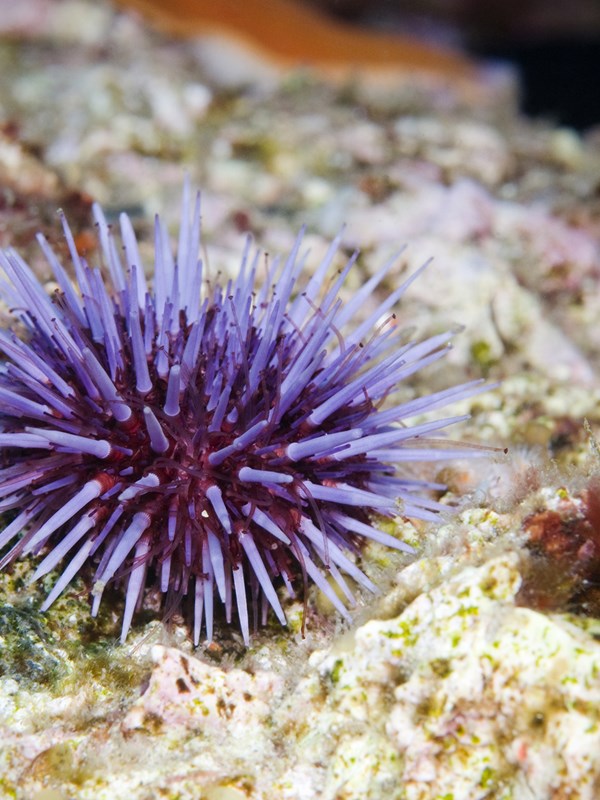
Purple Sea Urchin
Scientific Name Strongylocentrotus purpuratus
Native To Northern Pacific coast (from Alaska to Mexico)
Habitat Lower intertidal zones and kelp forests
Diet Kelp and algae
Size and Age Up to 10 cm (4 in) in diameter; maximum lifespan of 70 years
Natural History
Purple sea urchins, like other urchins, are spiny creatures whose bodies are comprised of a test (a calcified body covering or “shell”), which is covered in spines for protection. A purple sea urchin’s mouth is located on the bottom of its body, conveniently placed so that is may feed on the kelp forests in which it lives, as it uses its spines and tube feet to move around. Frequently preyed upon by sea otters, if their numbers are left unchecked, they can cause ocean desertification by wiping out whole kelp forests.
Near Threatened

Conservation Status
Sea urchin populations have historically been overfished, making their populations too small to be considered a sustainable sea food option.
Many ocean invertebrates require delicate and balanced conditions to survive. For this reason they are known as indicator species—when ocean conditions change, they are the first to be effected. Rising ocean temperatures, and ocean acidification, are currently major factors altering the health of our oceans. Sea urchins are early indicators of these changes.
Interesting Facts
- The mouth of a sea urchin is called “Aristotle’s lantern” and comprised of 5 tiny teeth.
- With their mouth located on the bottom of their body, their waste is excreted through the top.
- When a sea star strives to prey on an urchin, the urchin moves its spines aside and lets the sea star's arm get really close. This action hurts most sea star’s tube feet, making them back-off. Sunflower sea stars are not fended-off by such actions, because they can swallow sea urchins whole.
- Sea urchin populations are kept steady by sea otters and sunflower stars. Without these predators, purple sea urchins could wipe out whole kelp forests.
